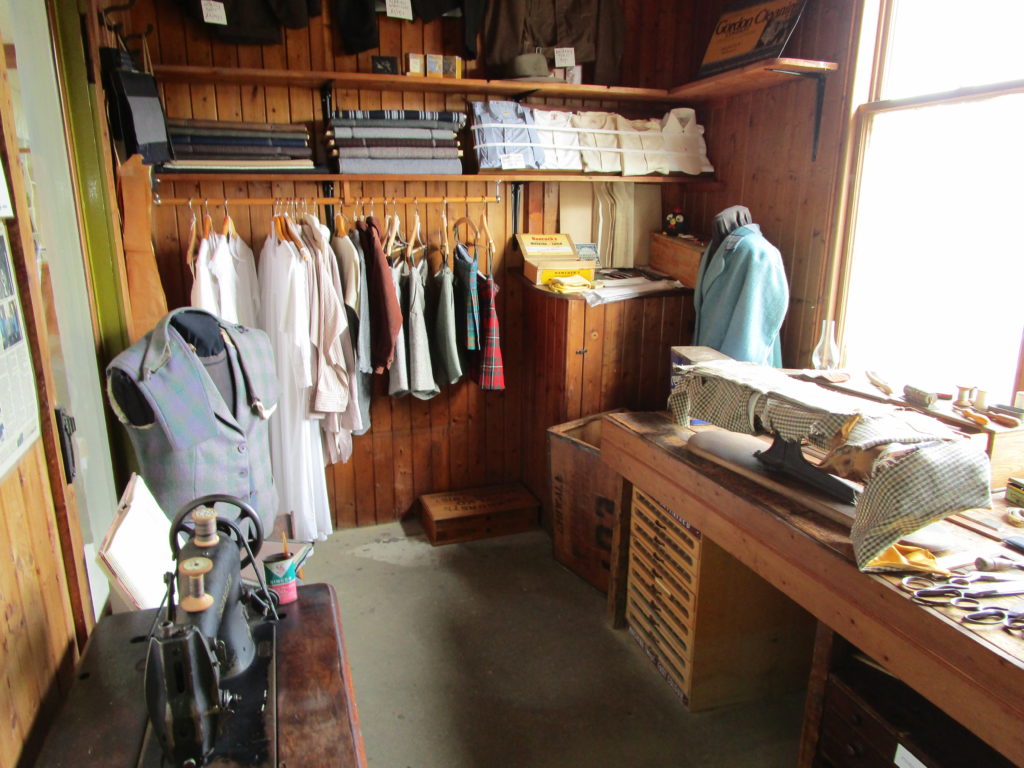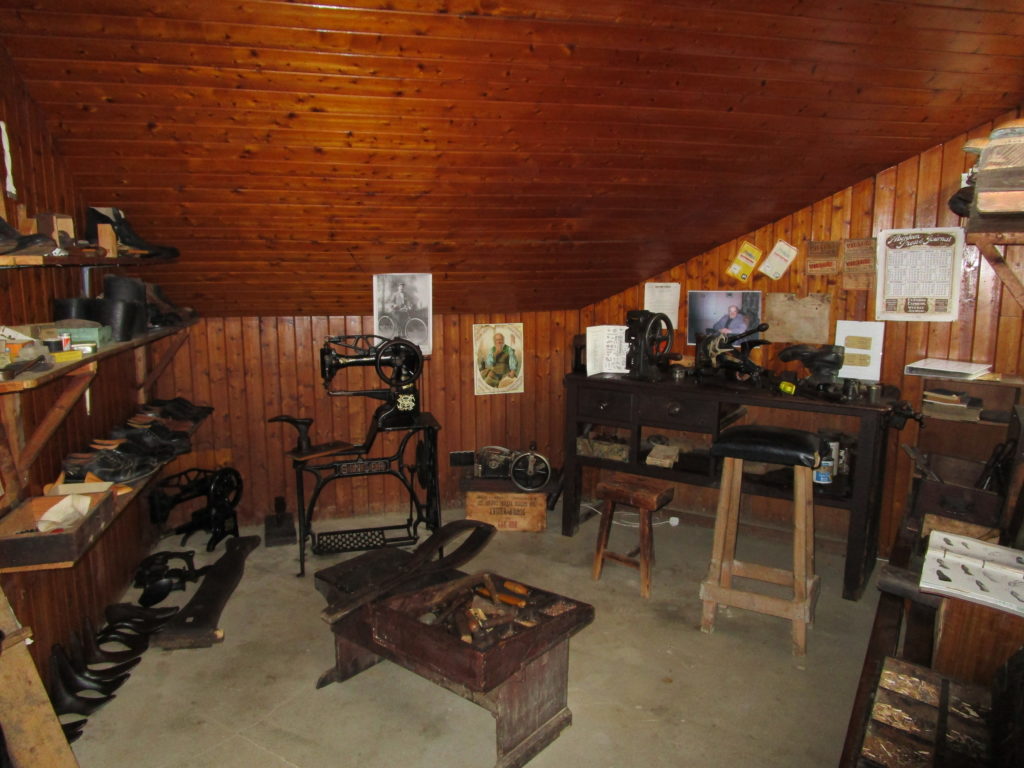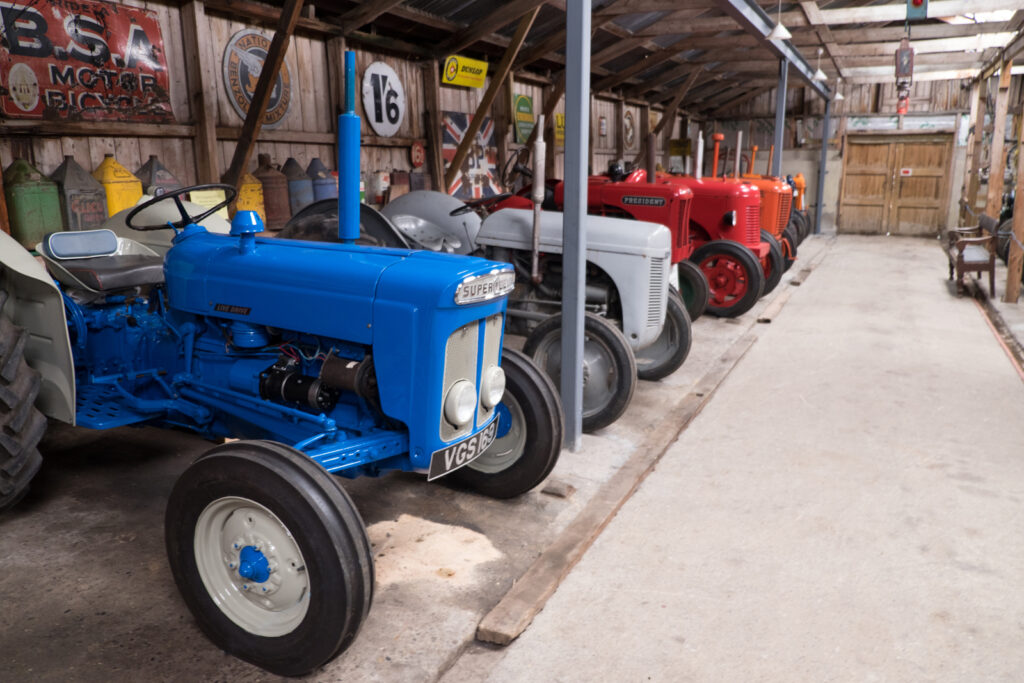Things to See
Auction Ring
In the centre of the building you will find the original auction sale ring with its tiered seating. The same design is still used today and can be seen on the television programme The Mart. The main business of the Alford Mart was the sale of livestock, with occasional evening sales of furniture and household goods. Beside the auctioneer’s rostrum you can see the original livestock weighbridge, made by Pooley of Liverpool. This displayed to buyers the weight of the animals as they entered the ring for sale. Today the ring is sometimes used for concerts.

Waterwheel
The waterwheel which you see outside the museum was originally from a farm near Banchory, on Deeside. Dating from around 1845, and powered by water from a mill dam, it was donated to the museum in 1993 by Lord Glenarthur of North Brae, Cults, who wanted to see it restored and preserved for the future. Today it is powered by electricity.

Workshops
The museum displays include four workshops – a tailor; a shoemaker (or souter); a blacksmith; and a joiner.
The tailor was Thomas Rearie (1896-1990), from Newmachar, who was still working when he died aged 93. Village based tailors such as Tom kept the country folk in work and ‘best’ clothes and here you can see examples of the sort of items he made at his sewing machine.

The souter (shoemaker) was Alexander Ingram (1906-1995), from Meikle Wartle, near Inverurie. Mr Ingram followed in a long line of shoemakers, with his father, grandfather, and great-grandfather all in the trade. He gave up the trade in the 1950s after rubber soles began to be introduced, which he declared was the end, as far as he was concerned. He subsequently became a postman instead.

The blacksmith’s shop contains items from Whitefield Smiddy, Forbes, still in existence today. The Alford area had many local blacksmiths who repaired farm implements and domestic utensils and shod the many horses used on the farms.
School Room
Although some of the items in the schoolroom, such as the teacher’s desk, date from the 19th century, older visitors will recognise the desks and equipment as still being in use in the 1960s. Many village schools were small with perhaps only two classrooms, with the younger children in one and the older children in the other. Stoves for heating the rooms were fuelled by peats, often brought by the children. The blackboard was used for teaching and pupils had their individual slates to write upon. In the room, you can see examples of wall charts, books and other teaching aids. Local school parties can visit the room to experience what a day at school used to be like.

Domestic Life
The farm kitchen was, and still is, the main room of the farmhouse. Located close to the back door, it opened onto the farm close and was where the farm workers, friends and business callers were welcomed and fed. The large open fire and ‘swey’, later replaced by oil or fuel fired stoves such as Aga or Raeburn, ensured a constant supply of hot water and warmth to the family and were used for cooking. In our kitchen you will see a large variety of items used over the centuries in farms all around NE Scotland.


Tractors

Jukebox

We have a 1974 Rock Ola 459 American Jukebox that is still in great working order. Visitors can insert a £1 coin to hear two tracks. The selection of tracks was updated for the 2020 season by Lloyd Dixon. Many of the tracks are hits from 1974 to correspond with the age of the jukebox. Jukeboxes were popular forms of entertainment in the many small cafes and ice cream parlours which existed in Scottish towns in the 1950s and 1960s, and which provided a social gathering place for teenagers.
Model Railway
The railway depicts a Scottish railway as it would have been in 1945. Backdrops show scenes from the local area. Visitors can press a button to see the rolling stock in action.
